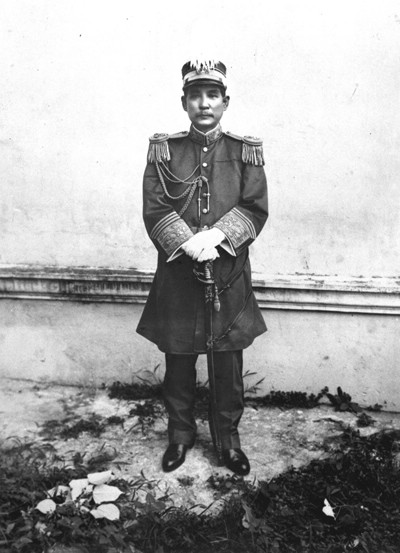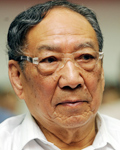|
 |
|
Dr. Sun Yat-sen in Guangzhou, Guangdong Province, in July 1917 (XINHUA) |

The 1911 Revolution, also known as the Xinhai Revolution, is an important milestone in China's history. In the past 100 years, China has transformed from an impoverished nation to a prosperous one. Great political, economic, cultural and social changes have taken place.
Painstaking efforts
The 1911 Revolution was not just a matter of chance. It was the result of deep-rooted social conflicts.
After the Opium War of 1840, China gradually declined into a semi-colonial and semi-feudal state. Colonists and imperialists waged several wars against China, and forced China to sign a number of unequal treaties. Through these treaties, they turned the feudal ruling class in China into their tools, and firmly controlled China's political and military affairs; on the other hand, they also exploited China economically, and thwarted the growth of China's indigenous capitalism and productivity.
Under the dual oppression of imperialism and feudalism, China faced serious internal and external crises. In 1895, Dr. Sun Yat-sen, the main leader of the 1911 Revolution, pointed out that internationally, China was looked down upon and surrounded by strong powers; and internally, the government was corrupt, bandits were rampant, and people suffered from starvation and lived miserable lives.
At the time the major conflicts in Chinese society were the conflicts between imperialists and the Chinese nation, and those between feudalists and the general public. The former was dominant. Invasion by imperialists was the fundamental cause for China's weakness and poverty in the late 19th and early 20th centuries.
In this situation, to salvage and rejuvenate the nation, it was necessary to fight both the imperialists and their vassal feudalists. This fundamental necessity gave rise to the revolutionary movements in modern Chinese history including the 1911 Revolution.
In fact, China's modern history is a succession of anti-imperialism and anti-feudalism struggles for national liberation and for the prosperity and well being of all Chinese people.
Before the 1911 Revolution, the Chinese people fought against foreign invaders during the Opium War of 1840, the Second Opium War in 1856-60, the Sino-French War in 1884-85, the Sino-Japanese War in 1894-95 and in resistance to the Eight-Power Allied Forces of Britain, the United States, Germany, France, Russia, Japan, Italy and Austria in 1900.
As a result of its corrupt social system and backward economy and technology, China lost all those wars.
Given the failure of the ruling class to resist foreign aggression, ordinary Chinese people, especially farmers, took up arms to fight against both feudal rulers and imperialists. The most famous armed struggles were the Taiping Heavenly Kingdom Movement in 1851-1864 and the Yihetuan Movement, known as the Boxer Uprising in the West, in 1900. These two movements, however, ended in failure.
Around the time of the Sino-Japanese War in 1894-95, reformers in the Qing (1644-1911) court sought to reform China's feudal political system and introduce elements from Western systems of governance. But the 103-day Reform Movement of 1898 was opposed by feudal conservatives, and was finally throttled by the faction led by Empress Dowager Cixi, the de facto ruler of China at that time.
Despite their impact on the Chinese nation's fight against imperialist and feudalists, the abovementioned struggles failed to deliver any systematic political programs. Only the 1911 Revolution was a real bourgeoisie democratic revolution. Sun set out to rejuvenate the Chinese nation, and put forth the Three People's Principles, namely, the principle of nationalism, the principle of democracy and the principle of people's livelihoods. He made explicit his objective of overthrowing the feudal monarchy and establishing a democratic republic.
The 1911 Revolution overthrew the Qing government, ending two-millennium of autocratic rule in China. This was a great achievement. Yet this revolution did not bring real national independence and democracy, nor did it change the semi-colonial and semi-feudal nature of Chinese society. Shortly after the 1911 Revolution, the once united country soon descended into civil war between rival warlords. In this sense, the 1911 Revolution was not successful.
|
